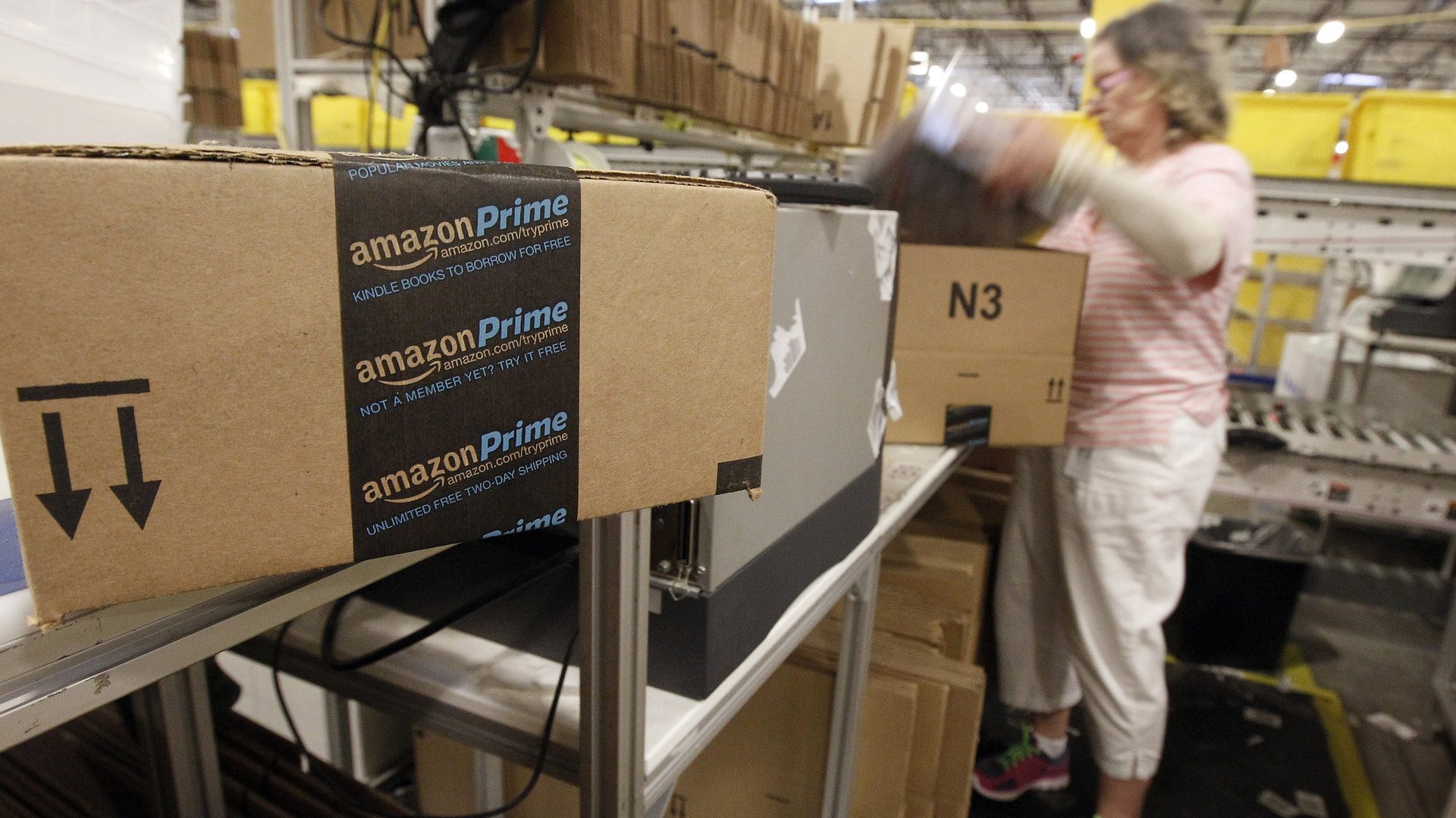Amazon is luring shoppers with gadget deals to haul in new Prime subscribers
This post has been corrected.


This post has been corrected.
Amazon’s self-declared day of discounted shopping, Prime Day, is back on July 12. The retailer announced today (July 5) that this year it doubled the number of third-party sellers who will offer deals to consumers, to comprise a third of all the coveted “Lightning Deals” that will be available on the day.
Amazon has chosen to highlight products that skew towards a tech-centric customer base this year. They include the Segway hoverboard (20% off), a men’s watch made of wood (35% off), and high-end headphones and speakers (50% off, in some cases).
There’s one catch: To get these deals, customers must join Prime, Amazon’s customer loyalty program. The e-commerce giant hopes that dangling all this enticing gadgetry in front of customers will turn them into loyal Prime subscribers. Prime costs $99 a year and includes free two-day shipping for many items, as well as access to Amazon’s video and music streaming services. The retailer hopes that the gadget-fixated buyers of these one-off products will turn them into Prime addicts, gradually buying not just novelties, but staples from Amazon.
There’s evidence to suggest that customers, once hooked on Prime for a couple of years, never leave. The trick is to get them to sign up for the free 30-day trial in the first place. If they start paying to subscribe, then retention rates rocket to over 90% annually.
The first Prime Day was in July 2015, and it delivered solid subscriber growth for Amazon. In previous years, growth tended to hinge on the crucial final quarter, which could deliver bumps of over 30% to the year’s subscriber numbers. But Prime Day dispersed growth and took the pressure off the Christmas quarter in 2015, the research firm Consumer Intelligence Research Partners (CIRP) found, growing subscriber numbers by a less pronounced 15% last year.
While Prime growth is slowing, according to estimates by CIRP, it’s still expanding at a healthy double-digit clip. The program grew its US user base by 35% to 52 million subscribers (pdf) in December 2015, compared to a year earlier. But that’s down from the 54% growth it experienced in the previous annual period. Amazon doesn’t publish its Prime subscriber numbers, so CIRP uses its quarterly surveys to estimate how much Amazon customers are spending on the platform. It then compares this to Amazon’s public US revenue numbers to estimate the Prime subscriber base, it said. Amazon did not respond to a request for comment.
As Prime’s user base expands, the average amount each subscriber spends with Amazon also appears to be dipping, according to CIRP estimates. Amazon will have to accept that a bigger base of subscribers also means a smaller proportion of diehards who spend heavily on the platform. The retailer will still be pleased: Prime shoppers are still spending nearly double the amount of non-subscribers.
Correction: An earlier version of this article said Amazon Prime Day was happening on July 5, 2016, instead of July 12, 2016.